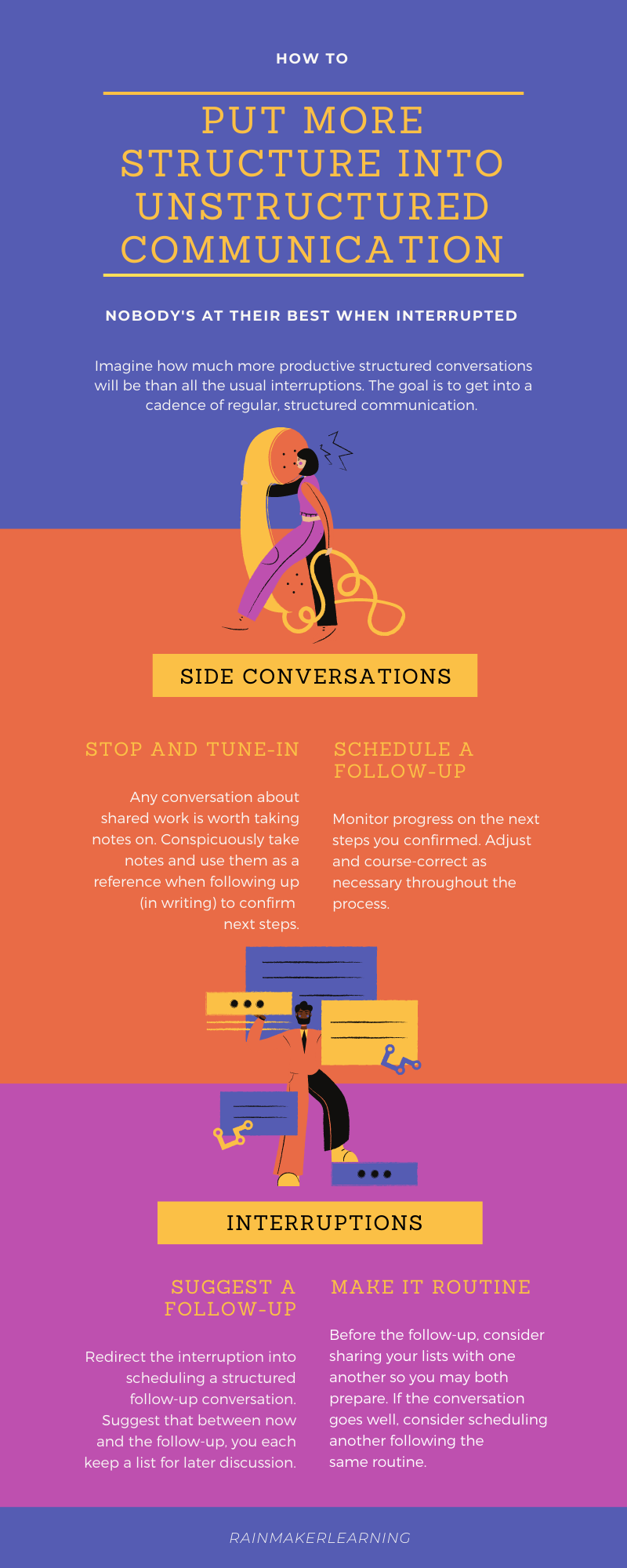How to transform work interruptions into opportunities

If you're wondering whether interruptions from colleagues have disappeared during the COVID-19 pandemic, rest assured, they have not. Ask just about anyone--those side conversations are still happening, whether you're working remotely or onsite. Whether it's a Zoom meeting tangent, or a rambling Slack thread, or the relentless ping of incoming text messages, there is still a lot of unstructured communication happening at work.
The stress and overwhelm of the pandemic has yet to dissipate, with many people saying they are working more than ever and suffering worse work-life balance as the line between work and life has become blurred. Under so much pressure, it is tempting to eradicate these informal workplace chats altogether: who has the time or focus to deal with the bombardment?
The problem is, there is often a lot of valuable information and opportunities to be mined from even the most annoying interruption. Imagine how much more productive you and your team would be if you transformed those interruptions into structured conversations. The goal is to get into a cadence of regular, structured communication.
Adding structure to side conversations
Of course, not all side conversations are worthy of more structure. Chats about your weekend or your family, while important for bonding, aren't what we're talking about here. Pay close attention to the kinds of unstructured interactions that happen before or after a formal meeting, or even side talk during meetings.
Those seemingly one-off communications, if they involve any substantive talk about the work, can be key. There is often critical information in the cross-talk at a meeting or a quick post-meeting huddle. The same goes for all those e-mails, texts, quick calls, hallway chats, and drop-bys.
First, stop and tune-in. Any conversation about work is worth taking notes on. Conspicuously take notes and then use them as a reference when following up (preferably in writing) to confirm next steps.
Second, schedule the follow-up! This is often where the ball gets dropped on structured communication. Don't lose momentum. Schedule a follow-up to monitor progress on the next steps you established and confirmed together. Adjust and course-correct as necessary throughout the process.
Adding structure to interruptions
Who are your regular interrupters? And who do you find yourself interrupting on a regular basis? Often, seemingly one-off communications can become an important, ongoing conversation. Again, the key is to add structure to those interruptions.
As soon as your Spidey senses tingle and you sense that this interruption is worth structuring, suggest a follow-up. Redirect the interruption by saying, "Hey, this sounds like an important conversation about the work. Let's press pause on it for now and follow-up later." Suggest that between now and the follow-up, you each keep a list for later discussion.
Before the follow-up, share your lists with one another so you may both prepare. If the conversation goes well, consider scheduling another conversation following the same routine. After a while, you'll probably start to notice you're being interrupted a lot less.










